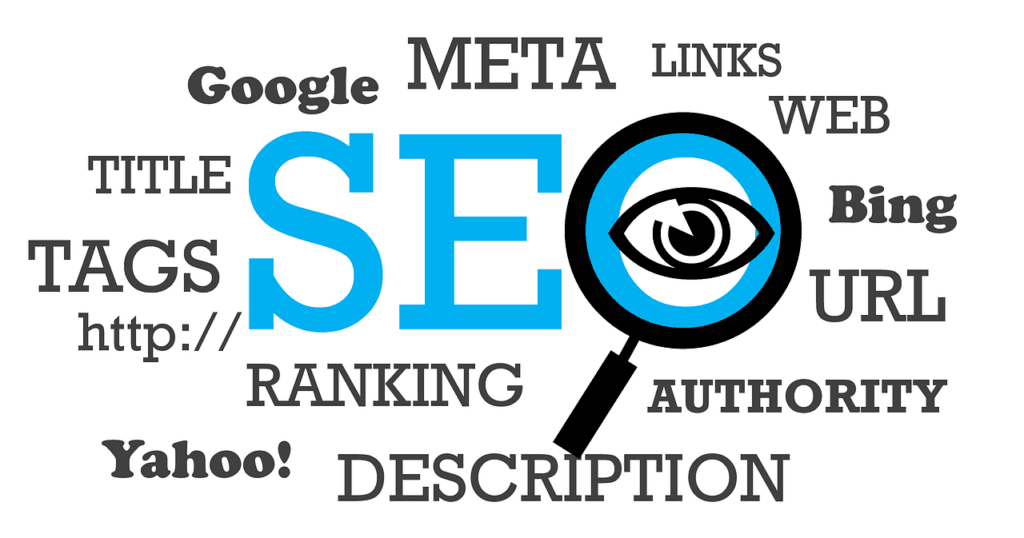This Article has been revised, edited and added to, by Poulomi Chakraborty.
- Introduction: The Power of Google My Business for Sustainable Brands
- Claiming and Verifying Your GMB Listing
- Crafting a Compelling Business Description
- Choosing the Right Categories
- Showcasing High-Quality Visuals
- Gaining and Managing Customer Reviews
- Utilizing Google Posts for Sustainability
- Optimizing for Voice Search
- Measuring Success: Key Metrics for Sustainable Brands
- Conclusion
In today’s eco-conscious world, sustainable brands are on the rise. These businesses, committed to environmental responsibility and ethical practices, offer products and services that align with a greener future. However, simply being a sustainable brand isn’t enough; you need to ensure that potential customers can find you when they search for eco-friendly solutions. This is where optimizing your Google My Business (GMB) profile comes into play.
GMB is a powerful tool for local businesses to enhance their online presence and connect with their local communities. In this comprehensive guide, we will explore effective strategies for optimizing your GMB profile specifically for sustainable brands. By the end of this article, you’ll have actionable insights to improve your online visibility, engage eco-conscious consumers, and promote your sustainable mission.
Now, let’s dive right into the first section:
Introduction: The Power of Google My Business for Sustainable Brands

Imagine you run a sustainable brand that sells organic, ethically sourced clothing. You’ve put significant effort into ensuring your products are eco-friendly, your supply chain is transparent, and your business practices are ethical. But how do you ensure that eco-conscious consumers in your local area, or those visiting your city, can find your store?
This is where Google My Business (GMB) becomes your ally. GMB is a free tool provided by Google that allows businesses to create and manage their online presence across Google’s platforms, including Search and Maps. It’s a digital business card that provides essential information about your brand, including your location, contact details, hours of operation, and customer reviews.
Why GMB Matters for Sustainable Brands
- Local Visibility: GMB helps you connect with local customers who are actively searching for sustainable and eco-friendly products or services in their area. It ensures that your business shows up in relevant local search results.
- Credibility: An optimized GMB profile enhances your brand’s credibility. When users see your profile with positive reviews and a complete set of information, they are more likely to trust and choose your sustainable brand.
- Competitive Edge: Many sustainable brands operate in competitive markets. An optimized GMB profile can give you a competitive edge, helping you stand out among similar businesses.
- Mission Promotion: Your GMB profile is an opportunity to showcase your sustainable mission and values. Use it to convey your commitment to eco-friendliness, ethical practices, and positive social impact.
- Engagement: GMB provides tools like Google Posts and Q&A sections that allow you to engage with potential customers, share updates, and answer their questions directly.
- Local SEO Boost: GMB is a significant component of local search engine optimization (SEO). A well-optimized profile can improve your local rankings and visibility.
As a sustainable brand, your mission goes beyond profit; it’s about making a positive impact on the environment and society. By optimizing your GMB profile, you ensure that more people in your local community can discover and support your eco-friendly initiatives.
The Path Ahead
In the following sections, we’ll explore practical strategies for optimizing your GMB profile to align with the values of sustainability, transparency, and environmental responsibility. Each strategy is actionable, designed to enhance your brand’s online presence, and ultimately, contribute to a greener future.
Claiming and Verifying Your GMB Listing
The journey to optimizing your Google My Business (GMB) profile begins with claiming and verifying your listing. This is a crucial first step in establishing your online presence and ensuring that your sustainable brand is accurately represented. Let’s explore how to do it:
Claim Your GMB Listing
- Visit Google My Business: Start by visiting the Google My Business website.
- Sign in or Create an Account: You’ll need to sign in with your Google account. If you don’t have one, you can create it here.
- Search for Your Business: Enter the name of your sustainable brand in the search bar. Google will display a list of potential matches.
- Select Your Business: If your brand appears in the search results, click on it to select it. If not, choose the option to create a new business listing.
- Provide Business Information: Follow the prompts to provide information about your sustainable brand, including your business name, address, phone number, website URL, and category.
- Verification Options: Google offers several methods for verifying your listing. The most common methods are postcard verification (Google sends a postcard with a verification code to your business address) and phone verification (Google calls with a verification code).
Verifying Your GMB Listing
Verifying your listing is essential to gain full control over your GMB profile. Here’s how to complete the verification process:
- Postcard Verification: If you choose postcard verification, you’ll receive a postcard at your business address within a few weeks. It will contain a verification code. Log in to your GMB account and enter the code to complete the verification.
- Phone Verification: If you opt for phone verification, Google will call the phone number associated with your business. You’ll receive an automated call with a verification code. Enter the code when prompted.
- Instant Verification: Some businesses that have already verified their Google Search Console property may be eligible for instant verification. In such cases, Google will verify your GMB listing automatically.
Why Verification Matters
Verification is crucial for several reasons:
- It confirms to Google that you are the rightful owner or representative of your sustainable brand, allowing you to manage your GMB profile effectively.
- It helps prevent unauthorized edits to your listing, ensuring that your brand’s information remains accurate and trustworthy.
- Verification grants you access to features like Google Posts, customer reviews, and Insights, which are essential for optimizing your profile.
Once you’ve successfully claimed and verified your GMB listing, you can proceed to optimize it further to align with your brand’s sustainability mission and engage with your local audience effectively.
Crafting a Compelling Business Description

With your Google My Business (GMB) listing claimed and verified, it’s time to create a compelling business description that resonates with eco-conscious consumers. Your description is your opportunity to convey your brand’s values, mission, and unique offerings. Let’s dive into how to craft an engaging business description:
Keep It Concise and Informative
Your business description should be concise yet informative. Aim for a clear and compelling introduction to your sustainable brand. Use plain language to ensure that your message is easily understood.
Highlight Your Sustainability Mission
Emphasize your commitment to sustainability in your description. Explain how your brand contributes to a greener future, whether through eco-friendly products, ethical sourcing, or eco-conscious practices.
Showcase Your Unique Selling Proposition (USP)
What sets your sustainable brand apart from others? Whether it’s your unique products, transparent supply chain, or community involvement, make sure to highlight your USP in your description.
Include Relevant Keywords
Incorporate relevant keywords naturally into your description. Think about the terms that eco-conscious consumers might use when searching for products or services like yours. For instance, if you sell organic clothing, include phrases like “organic apparel” and “sustainable fashion.”
Mention Awards and Certifications
If your sustainable brand has received awards or certifications related to environmental responsibility or ethical practices, mention them in your description. These accolades can boost your credibility.
Address Customer Needs
Consider the needs and interests of your potential customers. Explain how your brand addresses their eco-friendly preferences, such as offering eco-conscious alternatives to mainstream products.
Encourage Action
End your description with a call to action (CTA). Encourage users to visit your store, explore your website, or contact you for more information. A well-crafted CTA can prompt potential customers to take the next step.
Regularly Update Your Description
Your sustainable brand may evolve over time, and your description should reflect these changes. Regularly review and update your GMB description to ensure that it accurately represents your brand’s values and offerings.
Example Business Description
Here’s an example of a compelling business description for a sustainable brand:
“Welcome to EcoThreads – Your Destination for Sustainable Fashion! At EcoThreads, we’re on a mission to revolutionize the fashion industry by offering a curated collection of ethically made, organic clothing. Our garments are not only stylish but also eco-friendly, created with the utmost respect for the planet. We’re proud recipients of the Green Fashion Award, a testament to our dedication to sustainability. Join us in making a positive impact, one eco-friendly outfit at a time. Visit our store today to explore our sustainable fashion choices and be a part of the change.”
Your GMB description is a powerful tool for conveying your brand’s values and attracting eco-conscious consumers. Craft it carefully to make a lasting impression on your audience.
Choosing the Right Categories

Selecting the right categories for your sustainable brand’s Google My Business (GMB) profile is crucial for ensuring that potential customers can find you when they search for eco-friendly products or services. Categories help Google understand your business and match it with relevant search queries. Here’s how to choose the right categories:
Primary Category
Your primary category is the most important one—it defines your core business. For a sustainable brand, your primary category should reflect the nature of your products or services. Examples include:
- “Sustainable Clothing Store”
- “Eco-Friendly Home Products”
- “Organic Grocery Store”
- “Green Beauty Products”
Select the primary category that best describes the primary focus of your sustainable brand. This category has the most significant impact on how Google ranks and displays your business.
Secondary Categories
In addition to your primary category, you can select secondary categories that further specify your offerings. Think about the different aspects of your sustainable brand. For instance:
- If you’re a “Sustainable Clothing Store,” you might add secondary categories like “Organic Apparel,” “Ethical Fashion,” or “Eco-conscious Accessories.”
- For an “Organic Grocery Store,” secondary categories could include “Local Produce Supplier” or “Health Food Store.”
- An “Eco-Friendly Home Products” business might add “Sustainable Furniture” or “Green Cleaning Products” as secondary categories.
Adding secondary categories provides more context to your business and helps Google better understand what you offer. It also broadens the range of search queries that can lead users to your GMB profile.
Relevant and Specific Categories
When choosing categories, aim for a balance between relevance and specificity. Select categories that accurately represent your sustainable brand while ensuring that they are specific enough to target your ideal audience. Avoid overly broad categories that may not reflect your unique offerings.
Stay Consistent
Consistency is essential when choosing categories. Ensure that the categories you select on your GMB profile align with the categories on your website and other online listings. Consistency builds trust with both users and search engines.
Periodic Review
As your sustainable brand evolves or expands its offerings, periodically review and update your GMB categories. Staying current with your business’s focus ensures that potential customers can find you for relevant searches.
Example Categories for Sustainable Brands
Here are examples of primary and secondary categories for various types of sustainable brands:
Primary Categories:
- “Sustainable Fashion Brand”
- “Eco-Friendly Beauty Products”
- “Organic Food Store”
- “Ethical Home Decor”
- “Green Energy Solutions”
Secondary Categories:
- “Organic Clothing Store”
- “Vegan Beauty Products”
- “Local Farmers Market”
- “Upcycled Furniture”
- “Solar Panel Installation Service”
Selecting the right categories is an essential step in optimizing your GMB profile for sustainable brands. It ensures that your business is accurately represented and increases your visibility among eco-conscious consumers.

Related: Check out our free SEO suite

Showcasing High-Quality Visuals
Visual content plays a significant role in shaping the perception of your sustainable brand on Google My Business (GMB). High-quality images and videos not only capture the essence of your eco-friendly offerings but also engage potential customers. Let’s explore how to make the most of visual content on your GMB profile:
Profile Photo
Your profile photo is the first visual users see when they come across your GMB listing. Choose an image that represents your sustainable brand effectively. It could be your brand logo, a storefront photo, or an image of your signature eco-friendly product.
Ensure that the profile photo is clear, well-lit, and recognizable even at small sizes. It should convey the essence of your brand and its commitment to sustainability.
Cover Photo
The cover photo provides an opportunity to showcase your sustainable brand’s personality. Consider using an image that reflects your brand’s mission and values. For example, if you’re an eco-conscious fashion brand, you might showcase a photo of a stylish eco-friendly outfit.
Ensure that the cover photo is visually appealing and compelling. It should invite users to explore your GMB profile further.
Additional Photos
GMB allows you to upload additional photos that provide a more comprehensive view of your sustainable brand. These can include images of your eco-friendly products, your team, your store’s interior, and any eco-friendly initiatives you support.
Use these additional photos to tell a visual story about your brand’s commitment to sustainability. Showcase the unique features and benefits of your products or services through captivating visuals.
Videos
Videos are an excellent way to engage users and convey your brand’s message effectively. Consider creating short videos that highlight your sustainable practices, the making of your eco-friendly products, or customer testimonials. Keep videos concise and focused on delivering value to your audience.
Image Quality
High-quality visuals are essential for making a positive impression. Use images and videos that are well-composed, well-lit, and in focus. Avoid low-resolution or blurry content, as it can detract from your brand’s credibility.
Diversity of Content
Diversify your visual content to cater to different aspects of your sustainable brand. Include images of your products, your team, your eco-friendly processes, and any community or environmental initiatives you’re involved in. This diversity creates a more comprehensive and engaging profile.
Regular Updates
Keep your visual content fresh by periodically updating your images and videos. If you introduce new eco-friendly products or make sustainability-related changes to your business, reflect these updates in your visual content.
Example Visual Content Ideas
Here are some visual content ideas tailored to sustainable brands:
- Behind-the-Scenes: Share images or videos of your eco-friendly production process or sourcing methods.
- Customer Stories: Showcase photos of satisfied customers using your eco-friendly products.
- Sustainability Initiatives: Highlight images of your participation in local clean-up events or environmental initiatives.
- Product Showcases: Regularly feature images of your best-selling eco-friendly products.
- Eco-Friendly Packaging: Showcase your sustainable packaging and its positive impact on the environment.
By leveraging high-quality visuals on your GMB profile, you can effectively communicate your brand’s commitment to sustainability and capture the attention of eco-conscious consumers.
Gaining and Managing Customer Reviews

Customer reviews are powerful social proof for your sustainable brand on Google My Business (GMB). Positive reviews can boost your credibility and attract eco-conscious consumers. However, managing reviews effectively is as important as gaining them. Let’s explore how to gain and manage customer reviews strategically:
Encourage Reviews
- Ask Satisfied Customers: Don’t hesitate to ask satisfied customers to leave reviews. After a purchase or a positive interaction, send a polite request for a review through email or in-store signage.
- Provide Exceptional Service: The best way to earn positive reviews is to consistently provide exceptional eco-friendly products or services. Quality and customer satisfaction should be your top priorities.
- Engage on Social Media: Encourage your social media followers to share their experiences and leave reviews on your GMB profile. Engage with them by responding to comments and questions.
Respond to Reviews
- Respond to All Reviews: Show your commitment to customer satisfaction by responding to all reviews, both positive and negative. Responding to reviews demonstrates that you value feedback.
- Timely Responses: Aim to respond to reviews promptly, ideally within 24-48 hours. This shows that you are actively engaged with your audience.
- Professionalism: Maintain a professional and courteous tone in your responses. Thank customers for their feedback and address any concerns or issues they may have raised.
- Personalization: Whenever possible, personalize your responses. Mention specific details from the customer’s review to show that you genuinely read and appreciate their feedback.
- Turning Negatives into Positives: When responding to negative reviews, focus on finding solutions rather than getting defensive. Offer to resolve the issue offline if necessary, demonstrating your commitment to customer satisfaction.
Showcase Reviews
- Feature Positive Reviews: Use the “Review” section of your GMB profile to showcase positive reviews. Highlighting customer testimonials can build trust with potential customers.
- Social Media and Website: Share positive reviews on your website and social media profiles. Create a dedicated section on your website for customer testimonials.
- In Marketing Materials: Incorporate excerpts from positive reviews into your marketing materials, such as brochures or flyers. Always attribute these quotes to the reviewers.
Avoid Fake Reviews
Never create or encourage fake reviews. Authenticity is key in review management. Fake reviews can damage your brand’s reputation and lead to consequences from review platforms.
Monitor Reviews
Use review management tools like ReviewTrackers or BrightLocal to monitor reviews across various platforms. These tools can help you stay on top of new reviews and respond efficiently.
Request Feedback
Ask customers for feedback even if they haven’t left a review. Constructive criticism can be valuable for improving your sustainable brand’s products or services.
Example Review Response
Here’s an example of a review response for a sustainable clothing store:
“Thank you so much for your kind words, [Customer’s Name]! We’re thrilled to hear that you love our organic clothing. It’s customers like you who inspire us to continue our commitment to sustainability. If you have any more questions or if there’s anything else we can assist you with, please don’t hesitate to reach out. We look forward to serving you again!”
Effective review management not only enhances your brand’s reputation but also provides valuable insights into customer preferences and concerns. By encouraging and responding to reviews, you can strengthen your connection with eco-conscious consumers.
Utilizing Google Posts for Sustainability
Google Posts is a valuable feature within Google My Business (GMB) that allows you to share timely updates, news, and promotions directly on your GMB profile. For sustainable brands, it’s an excellent tool to promote your sustainability initiatives and engage with eco-conscious consumers effectively. Let’s dive into how to use Google Posts strategically:
Types of Google Posts
Google offers various types of posts that you can use to communicate with your audience:
- What’s New: Share updates about your sustainable brand, such as new product launches, eco-friendly initiatives, or upcoming events.
- Events: Promote eco-conscious events, workshops, or webinars related to sustainability. Provide event details, dates, and booking information.
- Offers: Highlight special offers or discounts on your eco-friendly products or services. Include coupon codes or redemption instructions.
- Product Posts: Showcase specific eco-friendly products with images, descriptions, and pricing information.
- COVID-19 Updates: Keep customers informed about any changes to your business operations or safety measures during the pandemic.
Crafting Effective Google Posts
- Engaging Visuals: Use high-quality images or graphics to capture users’ attention. Visual content is more likely to be noticed and shared.
- Compelling Headlines: Create concise and compelling headlines that convey the essence of your post. Use action-oriented language.
- Informative Content: Provide clear and informative content in your post. Explain the significance of your sustainability initiatives or the benefits of your eco-friendly products or services.
- Call to Action (CTA): Encourage users to take action. Whether it’s “Learn More,” “Shop Now,” or “Book Today,” a clear CTA prompts users to engage with your post.
- Timely Updates: Keep your Google Posts up to date. If you’re running a time-sensitive sustainability campaign or event, ensure that your post reflects the current information.
Consistency
Maintain a consistent posting schedule to keep your audience engaged. Regularly sharing updates related to your sustainable brand’s initiatives shows your commitment to eco-consciousness.
Monitor Engagement
Track the performance of your Google Posts by using GMB Insights. Analyze metrics such as views, clicks, and actions taken. This data can help you refine your posting strategy over time.
Example Google Post
Here’s an example of a Google Post for a sustainable brand:
Headline: “Join Us for a Sustainable Fashion Workshop!”
Image: A vibrant photo of a workshop in progress, with participants working on eco-friendly clothing designs.
Description: “Discover the art of sustainable fashion at our upcoming workshop! Learn how we create eco-friendly clothing that’s stylish and earth-friendly. Join us on [Date] and unleash your creativity in a sustainable way. Reserve your spot now!”
CTA Button: “Book Now”
By using Google Posts effectively, your sustainable brand can keep customers informed about your eco-friendly initiatives, upcoming events, and special offers, ultimately deepening your connection with eco-conscious consumers.
Optimizing for Voice Search
Voice search is on the rise, with more users relying on voice-activated devices like smartphones, smart speakers, and virtual assistants to find information. Optimizing your Google My Business (GMB) profile for voice search ensures that your sustainable brand remains visible in this evolving landscape. Here’s how to do it effectively:
Understand Voice Search Behavior
Voice searches are often more conversational and longer than text-based queries. Users ask questions in a natural, spoken manner. Understanding this behavior is crucial for optimizing your GMB profile.
Target Question-Based Keywords
Optimize your GMB profile for question-based keywords that people are likely to use in voice searches. These may include “who,” “what,” “where,” “when,” “why,” and “how” questions related to your sustainable brand.
Optimize for Featured Snippets
Voice assistants often provide information from featured snippets in search results. Structure your GMB content to answer common questions concisely, increasing the likelihood of being featured in voice search results.
Local Voice SEO
Include location-specific information in your GMB profile, such as your city or neighborhood, to increase visibility in local voice searches. Ensure that your address and contact information are accurate.
User Intent
Consider the intent behind voice searches. Users often seek quick, actionable answers. Make sure your GMB profile provides clear solutions related to sustainability and eco-friendliness.
Natural Language Processing (NLP)
Voice search relies on Natural Language Processing (NLP) to understand and respond to user queries. Ensure that your GMB content is written in a way that NLP algorithms can easily parse, emphasizing clarity and relevance.
Mobile Optimization
Since many voice searches happen on mobile devices, prioritize mobile optimization. A mobile-friendly GMB profile is essential for voice search success.
Schema Markup
Implement schema markup to provide structured data that search engines can use to better understand your GMB content. This can enhance your chances of being featured in voice search results.
Local Voice Search Tactics
Consider creating content specifically tailored to local voice search, such as answering common local questions about eco-friendly practices and sustainability in your area.
Voice search is an emerging trend that’s likely to shape the future of local SEO. By optimizing your GMB profile for voice search, you can stay ahead of the curve and connect with a growing audience of eco-conscious consumers using voice-activated devices.
Measuring Success: Key Metrics for Sustainable Brands

To ensure that your efforts to optimize your Google My Business (GMB) profile for your sustainable brand are paying off, it’s essential to monitor key metrics and gather valuable insights. Here are the metrics that matter:
Organic Search Traffic
Monitor the amount of organic (non-paid) traffic your GMB profile receives. An increase in organic traffic indicates improved visibility in local search results, particularly for sustainability-related queries.
Click-Through Rate (CTR)
CTR measures the percentage of users who click on your GMB listing after seeing it in search results. A higher CTR suggests that your listing is compelling and relevant to users.
Conversion Rate
Track the conversion rate, which is the percentage of users who take a desired action after visiting your GMB profile. This action could be making a purchase, contacting you, or visiting your physical store.
Local Search Ranking
Regularly monitor your local search rankings for sustainability-related keywords and phrases. Tools like Google Search Console and third-party SEO software can provide insights into your rankings.
Online Reviews
Pay attention to the quantity and quality of online reviews on your GMB profile. Positive reviews can enhance your reputation and influence potential customers.
Clicks on Directions and Phone Calls
For brick-and-mortar sustainable brands, track the number of clicks on “directions” to your physical location and “phone calls” made directly from your GMB profile. These actions indicate strong user intent.
Google My Business Insights
Leverage the insights provided by Google My Business to understand how users find your brand, where they are located, and what actions they take. This data helps tailor your local SEO strategy.
Mobile Traffic and Engagement
Analyze mobile-specific metrics, including mobile traffic, bounce rate, and conversion rate. With the increasing use of mobile devices for local searches, mobile optimization is critical.
Backlink Growth
Monitor the growth of backlinks to your GMB profile. Quality backlinks from authoritative sources can boost your local SEO efforts.
Local Competition Analysis
Regularly assess your performance compared to local competitors. Identify areas where you can improve and stay ahead in the local search landscape.
Online Advertising ROI (if applicable)
If you’re running paid online advertising campaigns, track the return on investment (ROI) to ensure that your advertising efforts align with your local SEO strategy.
Social Media Engagement
While not directly related to your GMB profile, social media engagement can indirectly impact your online visibility. Monitor social media metrics, including follower growth and engagement.
Regularly review these metrics to understand the impact of your GMB optimization efforts for your sustainable brand. Adjust your tactics based on the data you gather to continually improve your online presence and connect with eco-conscious consumers effectively.
Conclusion
Google My Business is a powerful tool for sustainable brands looking to connect with eco-conscious consumers in their local communities. By implementing the strategies outlined in this guide and monitoring key metrics, you can enhance your online visibility, promote your sustainability initiatives, and contribute to a greener future.
Remember that GMB optimization is an ongoing process. Stay updated with SEO trends, adapt to changing customer behaviors, and remain committed to sustainability both in your business practices and your online presence. With dedication and the right strategies, your sustainable brand can thrive in the digital age.
Read Next:





















Comments are closed.